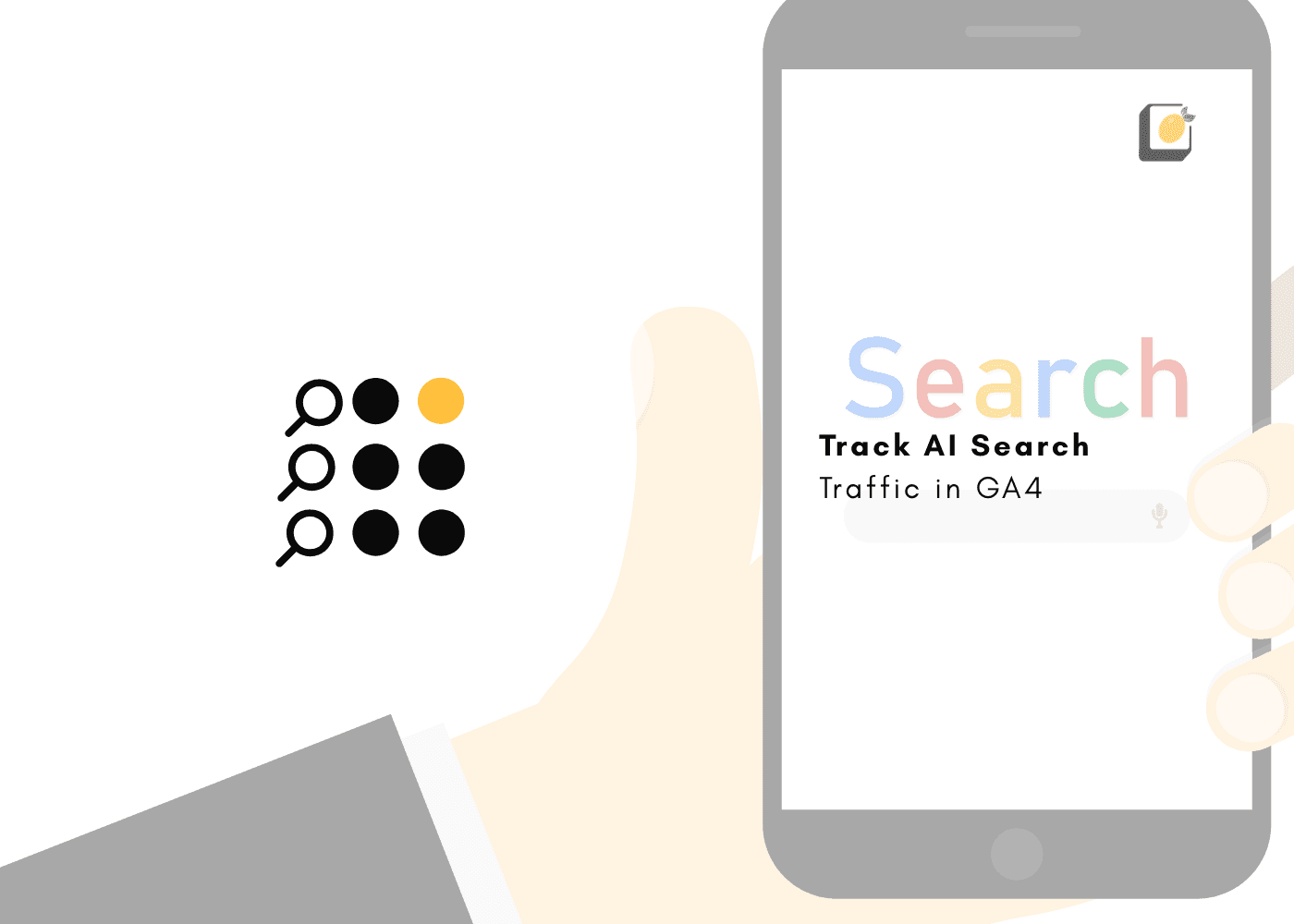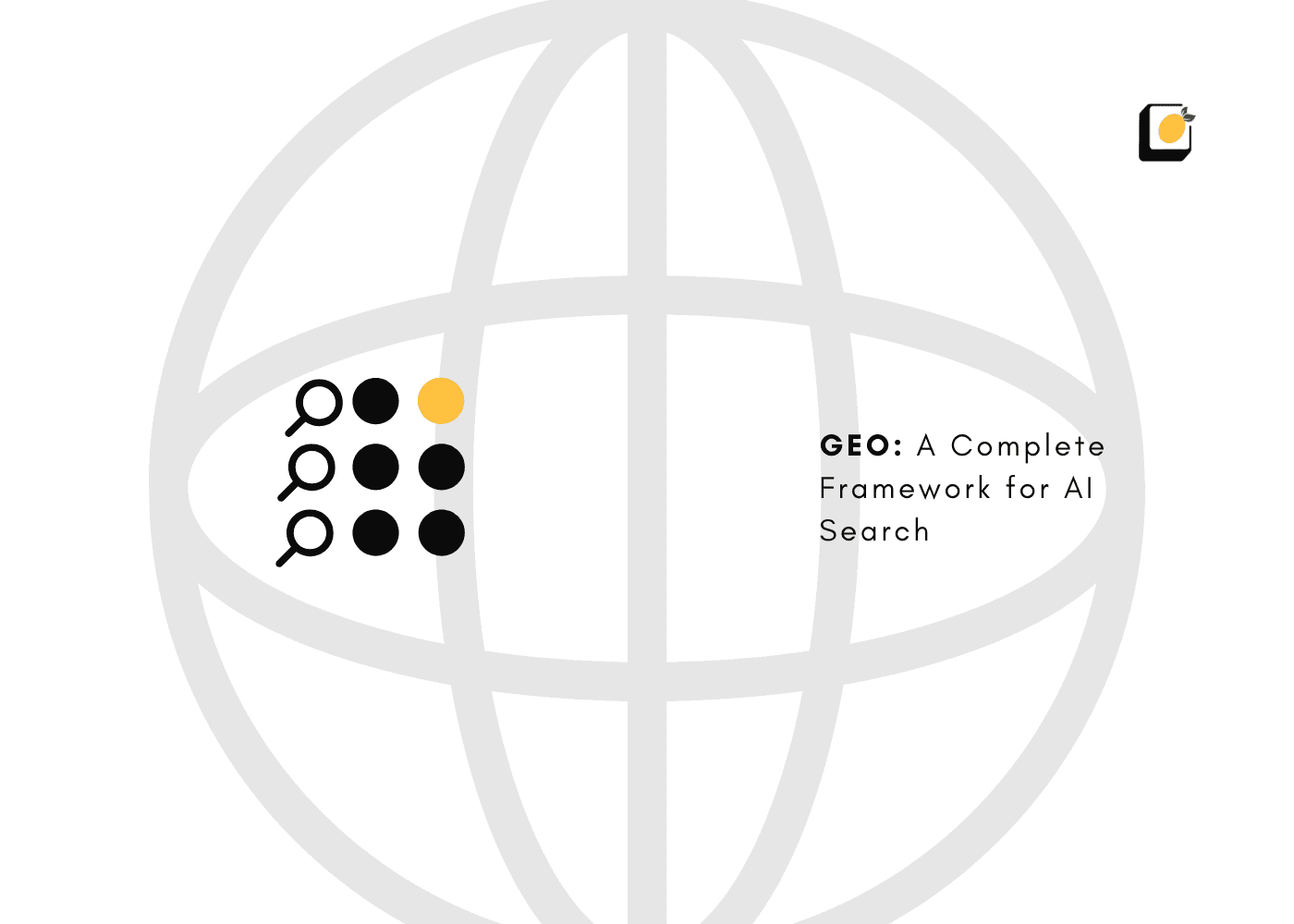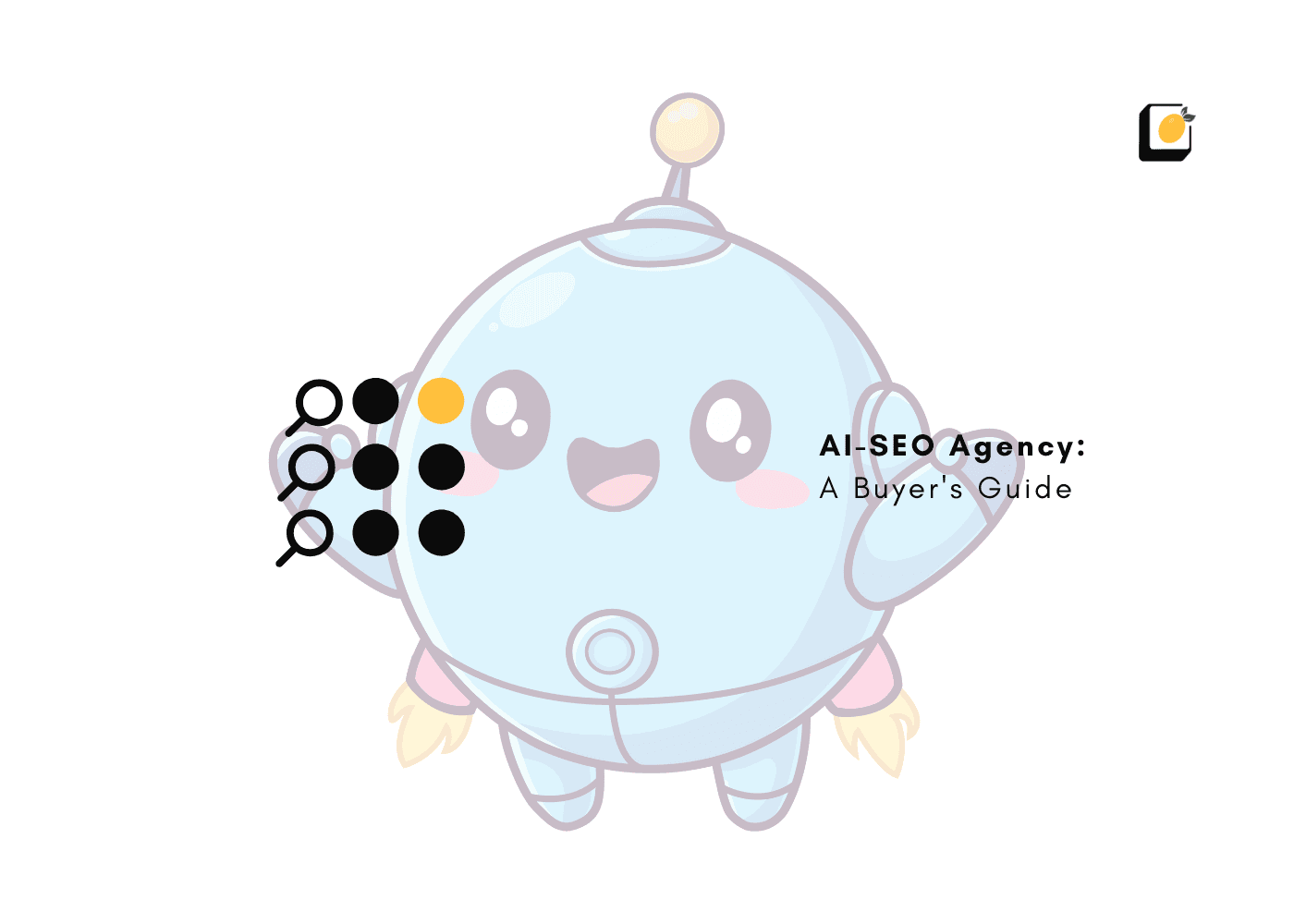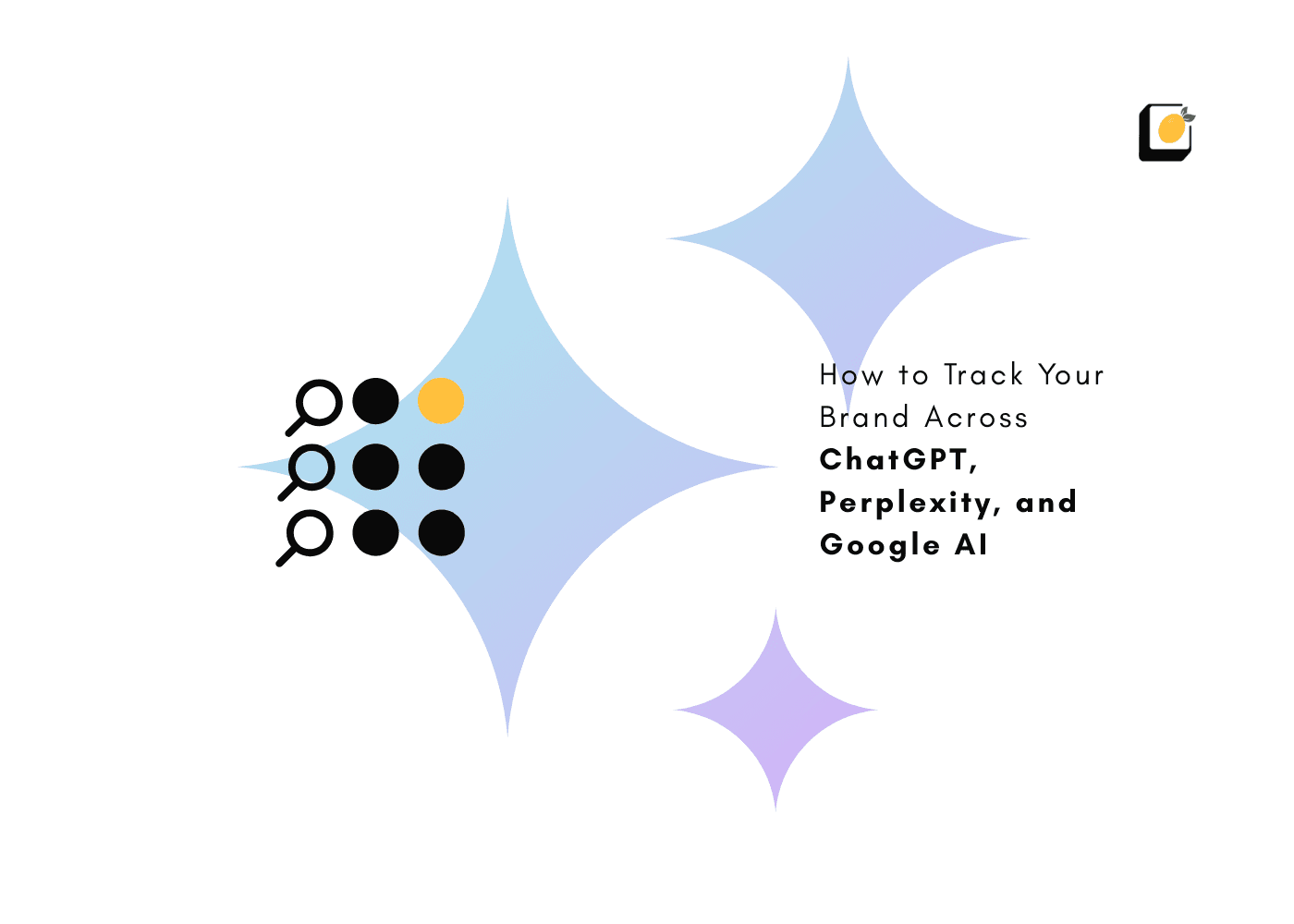Easy Ways to Get Your Website Found on Google
July 5, 2025
Join 500+ brands growing with Passionfruit!
Why Visibility on Google Matters More Than Ever For Local SEO
Why does visibility on Google matter? Because if your brand doesn’t appear when potential customers search, someone else’s will. Organic search is the #1 way most users discover products, compare solutions, and make decisions especially in high-consideration categories. Whether you’re a SaaS leader, e-commerce strategist, or growth marketer, showing up in Google results is the difference between passive traffic and compounding pipeline.
If you’ve ever found yourself typing get me on Google or how to get your website on Google, this guide is for you.
Here’s a complete breakdown of what it means to get found on Google, rank across multiple surfaces (including AI overviews), and turn visibility into revenue
What It Actually Means to Be Found on Google and How to Do It?
To drive real outcomes from organic search, your site must do more than exist; it must be found, trusted, and chosen.
There are three core surfaces where visibility matters:
Indexing: Is your content crawlable, structured, and included in Google's database?
Ranking: Does it appear high on SERPs for relevant, high-intent queries?
Engagement: Are users clicking, staying, and converting?
Getting indexed is just the first step. To get found on Google search, your strategy must connect user intent with technically sound, conversion-ready pages.
Every step from how you build content to how you structure data should help Google understand:
What your business solves
Why your site deserves to rank
How users benefit from clicking through
Brands that win here don’t just use keywords. They build relevance, authority, and contextual clarity around every search opportunity.
"If your pages aren’t solving, answering, or performing Google will replace you."
Next move: Review your indexed vs. ranking page ratio in Google Search Console. If less than 60% of indexed pages rank for anything, it’s time for a technical and intent-based audit.
Talk to a Growth Expert at Passionfruit to pinpoint and fix your visibility gaps.
Step 1: Nail Indexing and Crawlability
If your site isn’t in Google’s index, you’re invisible. Period. Indexing is the foundation of every organic growth playbook. Without it, your pages can’t rank, your content won’t convert, and your pipeline remains untapped.
Outcome First: Get every key page indexed, crawlable, and prioritized in Google’s system.
Here’s how to start:
Set up Google Search Console. It’s non-negotiable. This is your direct line to Google.
Connect and submit your XML sitemap. Keep it clean, updated, and error-free.
Use the URL Inspection Tool. Request indexing on important pages. It speeds things up.
Fix crawl traps. Filters, infinite scroll, session IDs, and broken pagination slow or block indexing.
Lead with internal links. Your highest-priority pages should be no more than 2 clicks from the homepage.
Pro Tip: If your site is indexed but not ranking, the issue may be JavaScript rendering, canonical conflicts, or a bloated crawl budget.
Audit your site using Passionfruit’s Technical SEO dashboard to diagnose crawl depth, page status, and indexing blockers in minutes.
Book a Demo to see how quickly we can surface and fix these foundational SEO issues.
If you want to get found on Google, indexing is your first checkpoint. Skipping this? You’ll never learn how to be found on Google in any context, technical or strategic.
Step 2: Build a Technical SEO Foundation That Scales
Speed, structure, and security are the unsung heroes of organic visibility. If your site loads slowly, breaks on mobile, or sends mixed signals to crawlers, you’re leaking traffic and trust. A strong technical SEO foundation helps your site rank faster, convert more consistently, and remain adaptable to search algorithm updates.
You’re not just optimizing for bots, you're future-proofing your entire acquisition engine.
A fast, responsive site with clear signals to search engines is non-negotiable. Focus on:
Mobile responsiveness and page speed (Core Web Vitals)
HTTPS and secure hosting
Canonical tags to avoid duplicate content issues
Schema markup for products, FAQs, articles, etc.
Don’t Forget Image SEO
Google can’t “see” images unless you tell it what’s there. Use alt tags to describe images clearly this improves accessibility and gives Google contextual data to rank your visuals in Image Search. Bonus: Pages with optimized alt text perform better in screen readers and pass accessibility checks that can influence page experience scores.
Using Passionfruit’s technical audit dashboard, you can flag errors that affect indexing, crawl depth, and ranking probability in real time.
Still wondering how to be found on Google search? Start by fixing technical gaps before scaling content.
Step 3: Use the Right Keywords, the Right Way
Keywords are no longer about stuffing, they're about understanding searcher psychology. Every time a user searches, they’re expressing intent. Your job is to meet that intent with helpful, structured, and optimized content.
Why it works:
Long-tail keywords (e.g. “best CRM for early-stage startups”) convert better.
Conversational queries align with AI Overview placements.
Keyword clusters help Google associate your expertise with multiple queries.
Start here:
Use Ahrefs or Passionfruit’s Keyword Intelligence to find low-difficulty, high-intent queries.
Map keywords to funnel stages: Awareness → Consideration → Conversion.
Build topic clusters: one hub page + 5–10 supporting posts.
Example: Instead of targeting "SEO", own the niche: "how to get your website on Google without backlinks", "get found on Google in AI Overviews", "ranking without domain authority".
Bonus Tip: Set Up Google Business Profile for Local Discovery
If you're targeting location-based traffic, don’t skip this. Google Business Profile (GBP) lets your company appear in local search results and “near me” queries especially important for retail, services, or physical offices. Add verified details like hours, categories, and reviews to boost trust and visibility in Google’s local 3-pack.
Optimising GBP is a core tactic if you're focused on how to be found on Google by local audiences or looking to get me on Google searches near your store or office.
Step 4: Refresh and Reclaim Existing Content
Old content underperforms because it was created for past ranking logic. But with updates, it can become your highest-ROI asset.
Here’s what to do:
Identify underperforming pages. Target those with impressions but low clicks.
Update copy for clarity and freshness. Reflect search intent and add visuals or recent data.
Improve internal links. Connect relevant authority pages to boost visibility.
Re-index via Google Search Console. Signals freshness to Google’s crawlers.
When done right, you reclaim rankings, improve CTR, and get found on Google more consistently especially for long-tail queries. If you're aiming to get me on Google for your niche terms, this is the place to start.
Step 5: On-Page SEO: Small Details, Big Impact
On-page SEO is where precision meets performance. These micro-optimizations when done right improve visibility, click-through rates, and even placement in AI-generated results. Skipping this is like building a house without windows: the structure exists, but no one sees inside.
Even well-written content won’t rank without these basics: won’t rank without these basics:
Titles: Use benefit-driven titles with emotional hooks
Meta descriptions: Treat them like ad copy make users click
H1s and H2s: Align with search intent
Anchor text: Make it semantically relevant
Structured data: Add schema for enhanced visibility
Pages with schema and intent-aligned formatting are 33% more likely to appear in AI-generated results and answer boxes. If your goal is to get found on Google, these aren’t extras, they're essentials.
Need help cracking how to be found on Google search without backlinks or massive budgets? On-page optimization is where small teams win.
Whether you’re typing how to be found on Google, wondering how to get your website on Google, or shouting get me on Google, the tactics above will make sure you’re not just visible but chosen.
Step 6: Build the Right Backlink Profile
Backlinks are still one of the strongest signals of authority but not all links are created equal. Google’s algorithm now emphasizes relevance, trust, and freshness. Instead of chasing volume, invest in fewer, smarter placements that reinforce your topical authority.
You don’t need thousands of backlinks. You need: thousands of backlinks. You need:
Links from topic-relevant domains
Contextually placed links (not footers or sidebars)
Mentions from trusted sources (news, gov, .edu, or niche authority sites)
Pitch data-driven studies, share proprietary benchmarks, or co-create content with aligned brands. Focus on earning links, not spamming them. how to get your website on google
Step 7: Expand Into GEO to Rank on AI-Powered Surfaces

Traditional SEO is no longer enough. With nearly 60% of users getting answers without clicking, you need a strategy that puts your content directly inside AI summaries and overviews. That’s what GEO (Generative Engine Optimization) unlocks visibility in the new age of search.
GEO (Generative Engine Optimization) helps your site appear in AI Overviews and zero-click responses. helps your site appear in AI Overviews and zero-click responses.
Key principles:
Write in a natural, question-answer format
Use bullet points and summaries Google can repurpose
Add structured FAQs with schema markup
Focus on E-E-A-T: expertise, experience, authority, trust
Nearly 60% of queries no longer result in clicks. GEO ensures your brand shows up even when people don’t click. how to be found on google
Use Passionfruit’s GEO module to optimize your answer-engine presence and get me on google in zero-click results.
Step 8: Use Paid Search to Validate Organic Strategy
Great SEO starts with smart experimentation. Paid campaigns give you rapid feedback loops helping you validate search intent, angles, and offers before investing in long-form content. It’s not just media spend; it’s data you can scale.
Run paid campaigns to:
Test which search terms actually convert
Validate CTAs, angles, and landing page messaging
Gather SERP impression data before committing to content
Then double down on what works through SEO.
Combine this with organic ranking data and Passionfruit’s attribution system to trace revenue back to specific pages and terms.
Step 9: Monitor the Metrics That Actually Matter
Vanity metrics inflate dashboards and deflate ROI. The best SEO programs focus on metrics that tie directly to revenue. These aren’t guesses, they're KPIs that prove if you’re growing visibility, pipeline, and influence.
Here’s what top CMOs track to prove SEO ROI: track to prove SEO ROI:
Organic traffic to lead/pipeline ratio
Number of pages in top 10 per intent stage
Bounce rate on key conversion pages
AI Overview placements and impressions
Indexed-to-ranking ratio (crawl efficiency)
These KPIs connect directly to business performance, not vanity. Monitor them monthly and optimize with intent.
Step 10: Fix What’s Broken and Iterate Fast
SEO is not set-and-forget. It’s iterative, insight-driven, and performance-led. The fastest gains come from refining what already exists your near-miss rankings, underperforming pages, and outdated assets.
The fastest way to improve visibility? to improve visibility?
Identify underperforming content
Refresh copy with clearer answers, better formatting
Improve internal links
Re-index updated pages in Google Search Console
How to Future-Proofing Your Search Strategy with SEO
As AI-driven algorithms reshape how people search, staying visible means staying adaptive. Here's how to ensure your site keeps showing up:
Stay on top of AI-driven ranking signals like engagement metrics, structured data, and answer citations.
Build a content strategy aligned with GEO (Generative Engine Optimization) to appear in zero-click results.
Work with specialists or platforms (like Passionfruit) that understand search beyond keywords into behavior, context, and conversational queries.
Repurpose high-performing content across video, audio, and visual formats, enriched with schema markup.
Consider voice search and natural dialogue optimizations as assistants and LLMs become everyday tools.
Flexibility and iteration will help your team thrive as search continues to evolve across Google, ChatGPT, Perplexity, and beyond.
Conclusion: Getting Found on Google Is a System, Not a Shot in the Dark
Getting found on Google is a function of clarity, consistency, and calculated execution. It’s not about tricks, quick wins, or throwing content at the wall, it's about building a discoverable foundation that meets users where they are. When done right, your website becomes a 24/7 growth engine that answers questions, drives pipeline, and earns long-term trust across both traditional search and AI-driven answers.
If you’re ready to stop guessing and start ranking, Passionfruit makes it easier to get found on Google through one unified SEO and GEO platform.
Request your custom visibility audit
FAQs
Q1. How long does it take to get found on Google?
Indexing typically takes a few hours to a few days if your sitemap is clean and submitted. Ranking usually takes 30–60 days, depending on keyword competition and site authority. For example, a niche landing page with strong internal links might appear in SERPs within 10 days.
Q2. How do I show up in AI Overviews or zero-click results?
Focus on GEO: structure your content like an answer box, use schema markup, and write in conversational Q&A formats. Pages like 'how-to' guides with clear steps and supporting data get cited more often by AI systems like Google's SGE.
Q3. Will publishing more blogs help me get found faster?
Only if those blogs are aligned with user intent. Ten optimized articles with solid formatting and long-tail targeting will rank faster than 100 shallow posts. GEO and internal links matter more than volume.
Q4. What tools help me get found on Google?
Use Google Search Console for indexing and site health, Ahrefs or SEMrush for keyword data, and Screaming Frog for audits. Passionfruit’s unified platform connects all of its technical, content, and GEO for smarter SEO decisions.
Q5. Do I need backlinks to get found on Google?
Yes, for high-competition terms. But for long-tail or local keywords, strong content and structure often outperform links. A well-built page with schema and FAQs can rank even without backlinks if it answers intent better.















